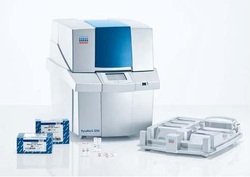|
Recently, scientists discovered by accident that a small strip of Whatman no. 1 paper can capture nucleic acids rapidly from a crude mixture containing ground up tissue in a lysis buffer. The paper strip can then be quickly washed without releasing the nucleic acid. After these steps, the paper strip retains enough nucleic acids to be dipped into a PCR reaction mixture and be used for amplification (Zou et al. 2017).
1 Comment
Ask any of my friends or colleagues and everybody will testify: I'm a gadget freak. So when a twitter post mentioned something called iPipet, I just had to delve into it as the "i" sounded gadgety and the "pipet" referred to laboratory equipment. So, what's it about?
 When talking or reading about pyrosequencing you're probably thinking immediately of the high-throughput 454 sequencing. This sequencing technique is based on the "sequencing by synthesis" principle and differs radically from the standard Sanger sequencing. It can be viewed as the qPCR version of standard PCR. This technique was commercialized by Pyrosequencing AB and has been further developed for high throughput sequencing by 454 Life Sciences. Qiagen acquired the pyrosequencing business line in 2008 and started developing the pyrosequence technique for low/medium throughput applications. So, even though it is based on the same technology (see video below), the pyrosequencing I am talking about here is NOT the 454 system but the Qiagen system! |
Archives
September 2018
Categories
All
|
 RSS Feed
RSS Feed






